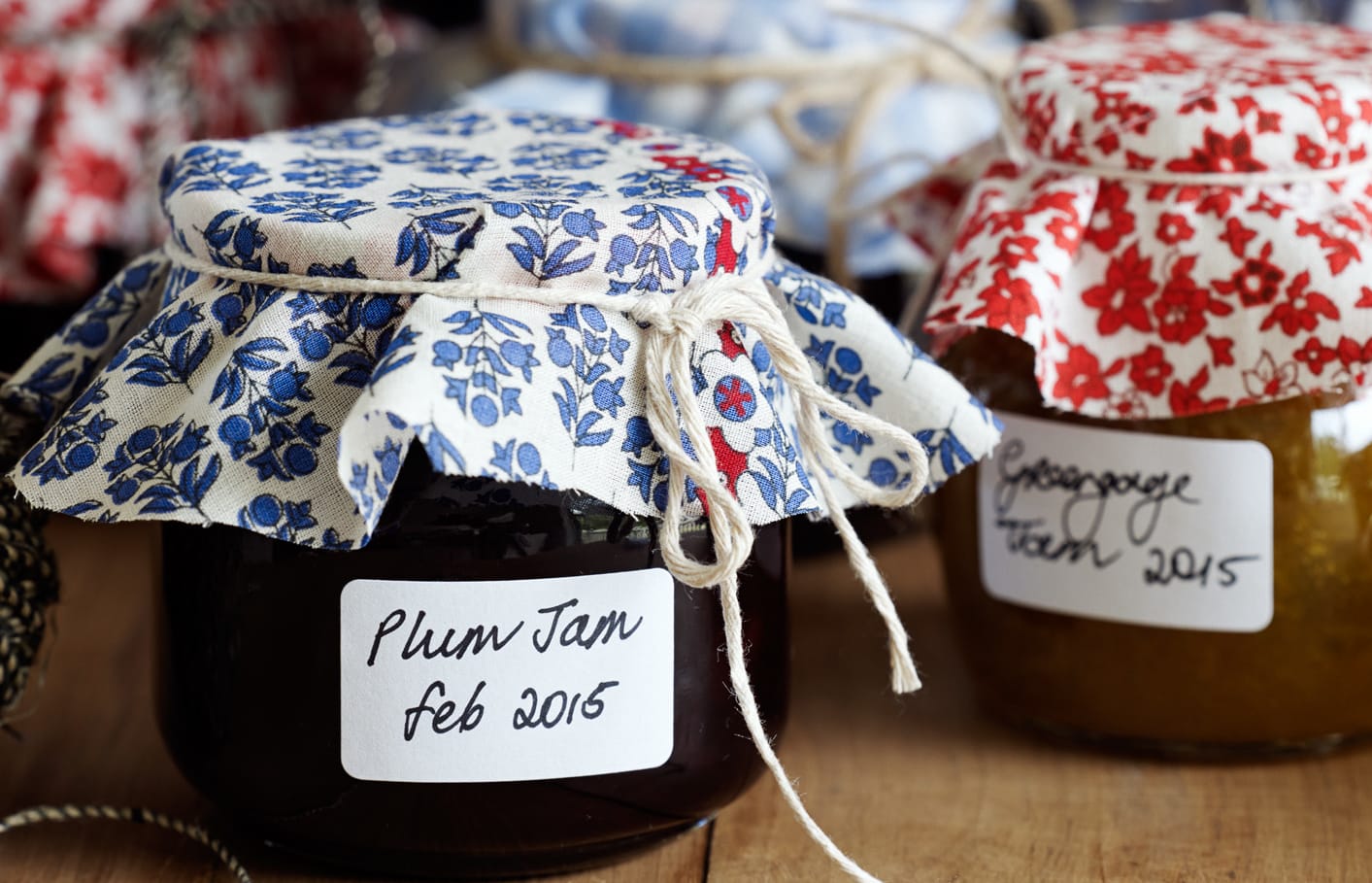Julie Biuso's Plum Jam

Photo: Aaron McLean
If it’s the first time you are making jam, try making a half quantity, which is easier to manage. Once you get the hang of it, move onto a bigger batch.
Ingredients
- 2 kg red-fleshed plums such as omega, black doris, damson, satsuma, preferably organic, and slightly under-ripe rather than ripe
- ¼ cup water
- 2 tsp lemon juice
- 1.8kg granulated sugar (organic granulated ‘golden’ sugar is suitable)
Method
Before starting the recipe, read 101 Jam Making below
1 Prepare jars by washing, rinsing, drying and heating in an oven preheated to 110°C. Tip sugar into a large shallow tin like a Swiss roll tin.
2 Weigh fruit, wash, shake off excess water, then cut in half and remove stones. If plums are large, chop into quarters or smaller pieces. If stones are hard to remove, leave them in and scoop out as they rise to the top. Put water in a preserving pan, then add the chopped plums and lemon juice. Set pan over a low to medium heat and slowly heat the fruit. This draws out the juices and pectin and softens the fruit. Once the fruit starts to bubble, increase heat to high and let fruit cook at a good bubble, but watch it so it doesn’t turn into a rolling boil. Let the fruit cook until reduced by one-third, about 25-30 minutes; stir from time to time.
3 Put the sugar in the oven below the jars to warm for 10-12 minutes while the fruit is bubbling, and put two saucers in the fridge to chill to use later for testing the set of the jam. If you are using a sugar thermometer, warm it in a jug of warm water.
4 When the fruit is ready, lower the heat, tip in the sugar, and stir with a long-handled wooden spoon until it is completely dissolved. If using a thermometer, shake it dry and insert into jam. Increase heat under pan and cook jam at a brisk but not an explosive boil, for about 10 minutes, or until it reaches 104°C – the setting point for jam; don’t stir during this process Alternatively, use the saucer-setting test here. Immediately turn off the heat and quickly skim off any bubbly scum from the top.
5 Have the warm sterilised jars ready either on a wooden board or double thickness of newspaper. Pour jam into jars – this is easily done using a jam jar funnel. Wipe rims of jars with a clean hot cloth (damp), put lids on jars and leave jam to cool. When jars are cool enough to handle, but without moving the jars, wipe outsides of jars with a damp cloth, then polish with a dry cloth. When jars are cool, adhere labels and store somewhere cool and dark.
101 Jam making
1 Select jars, wash, rinse, and transfer to oven. Wash and dry jar tops.
2 Measure sugar and transfer to a large shallow tin like a Swiss roll tin.
3 Weigh fruit, rinse, shake dry. Put water in pan. Cut fruit, removing stones. If using stones for added pectin, bundle up in muslin and tie with string. Add to pan.
4 Set up bench with newspaper covered with clean cloth or paper towels. Have somewhere to put the bubbling pan of jam – a cork mat, double thickness of tea towel or newspaper etc. Have ready a Pyrex jug for pouring jam into jars (I find a 500ml jug is ideal for small jars, but a 2-litre jug is better for larger jars). You’ll also need clean cloths for wiping, a long-handled wooden spoon for stirring the jam, and a thermometer warming in a jug of hot water if you have one.
5 Put sugar in oven to warm.
6 Put pan over a gentle heat and let the fruit soften and open up for 7-10 minutes. Bring to a bubble, then boil gently for 10-30 minutes, according to recipe.
8 Lower heat under pan, add warmed sugar, stir until completely dissolved, then turn up the heat and bring jam to a boil. Shake thermometer free of water and add to the pan (most have a clip or a hook so that you can secure them to the side of the pan; mine doesn’t but I hook it on the end of the handle). Cook until setting point is reached (104°C. Return thermometer to jug of warm water.
9 Remove jam pan to bundle of tea towels or newspaper. Skim off any frothy scum or stir it through. Insert funnel into first jar, scoop up jam in jug and pour into jar. Repeat. Fill them all up, then put on the lids.
10 Let jam settle, but while jars are still warm, without moving the jars, wipe outside of jars with a clean damp cloth to remove any stickiness – it’s far easier to do it while the jam is still hottish! Buff with a clean dry cloth. Let jam cool completely, label and store.
More information on Shared Kitchen